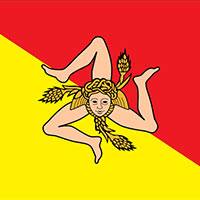Halaesa Arconidea (Alesa Arconidea)
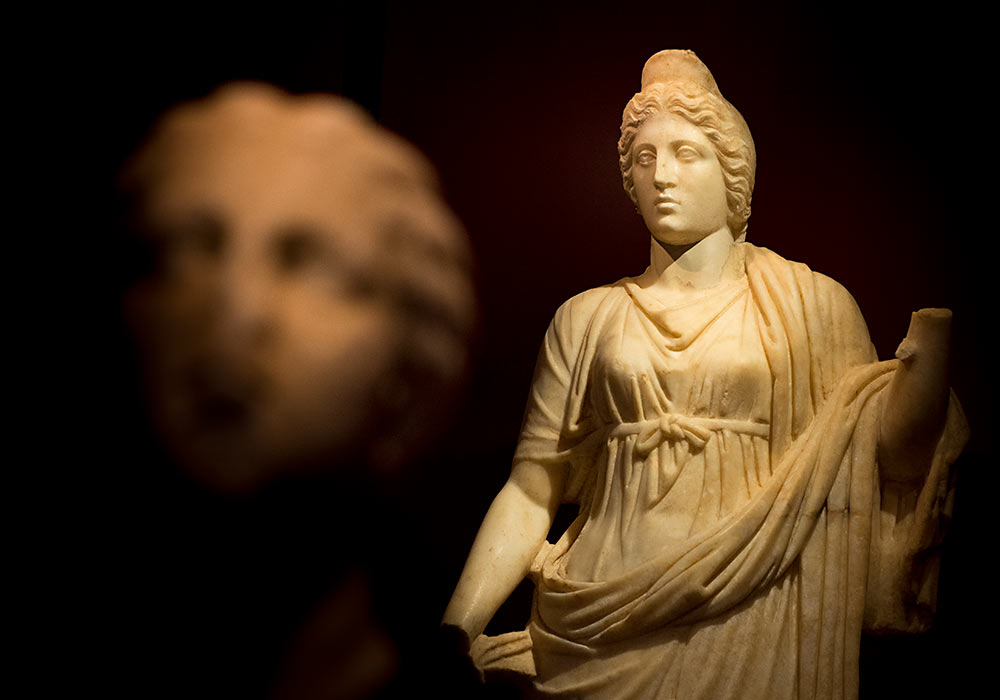
Statue of Ceres (2nd century AD) in the museum (antiquarium called Giacomo Scibona antiquarium) at Halaesa Arconidea (aka Alesa Arconidea) on the north coast of Sicily, some 27 km from Cefalù (take the SS113). Ceres was the goddess of agriculture, grain crops, fertility and motherly relationships and patron of Sicily. Ceres, in Roman mythology, was equivalent to the Greek Demeter.
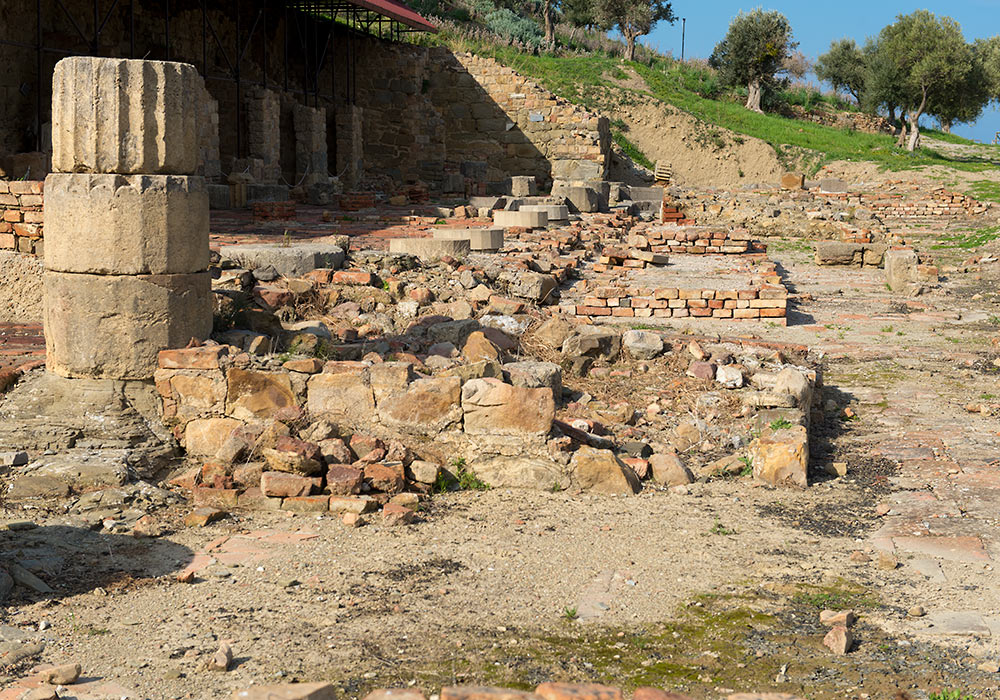
The agora. Halaesa Arconidea, extensively excavated in recent years, was founded in 403 BC by the dynastic ruler of Herbita, Archonides. There is a Roman necropolis near the entrance.
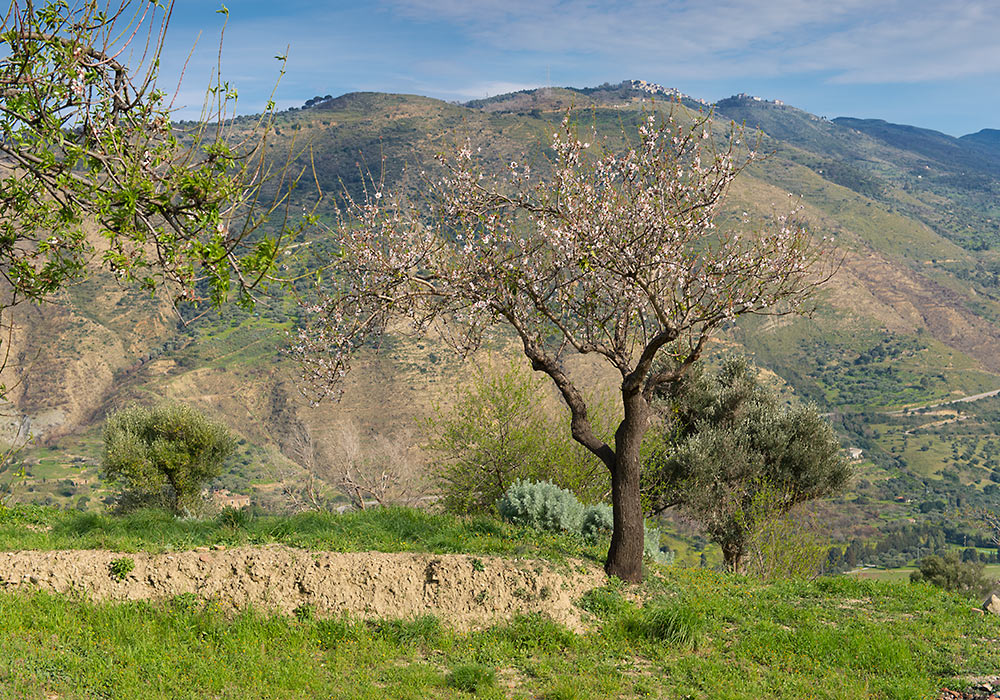
Beautiful views of the valley at Halaesa Arconidea (Alesa Arconidea).
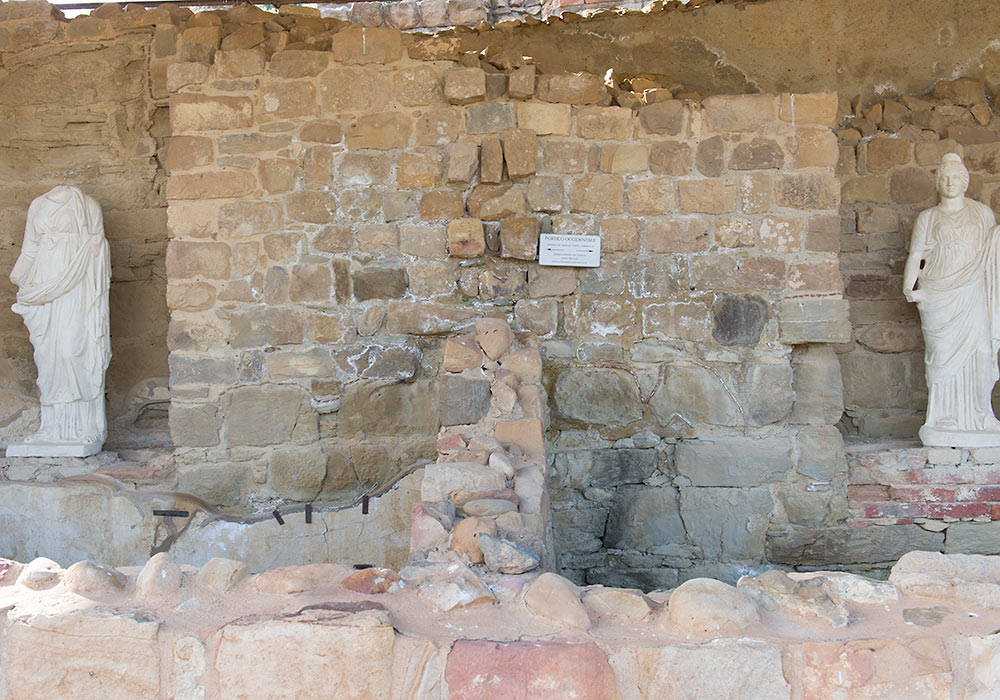
The thin red line in the wall marks where the restoration begins.
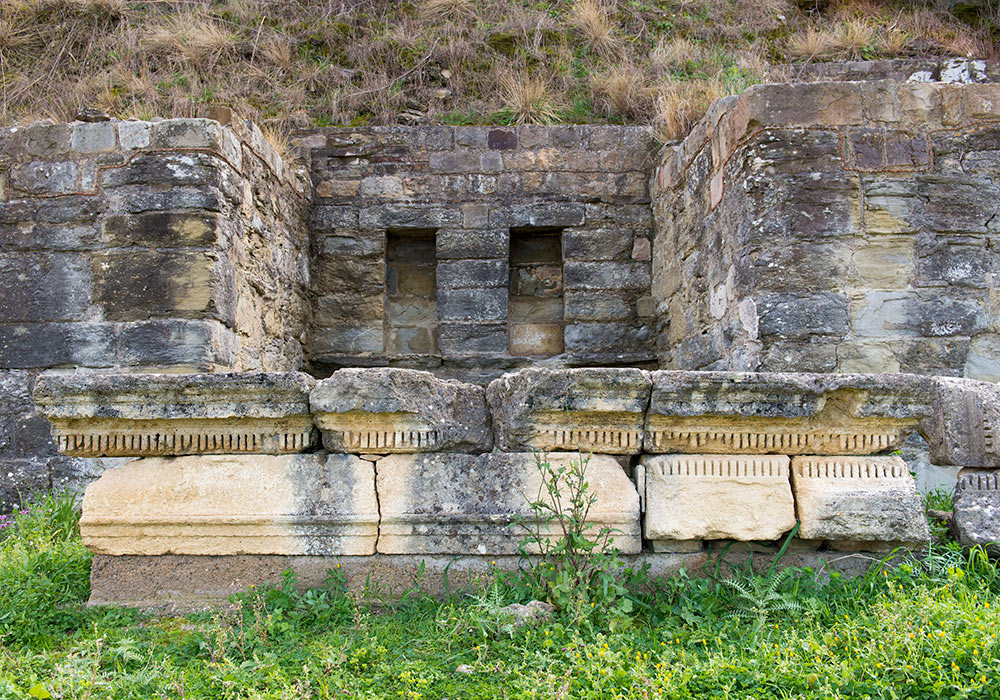
Ruins at Halaesa Arconidea.
The medieval church: Santa Maria delle Palate
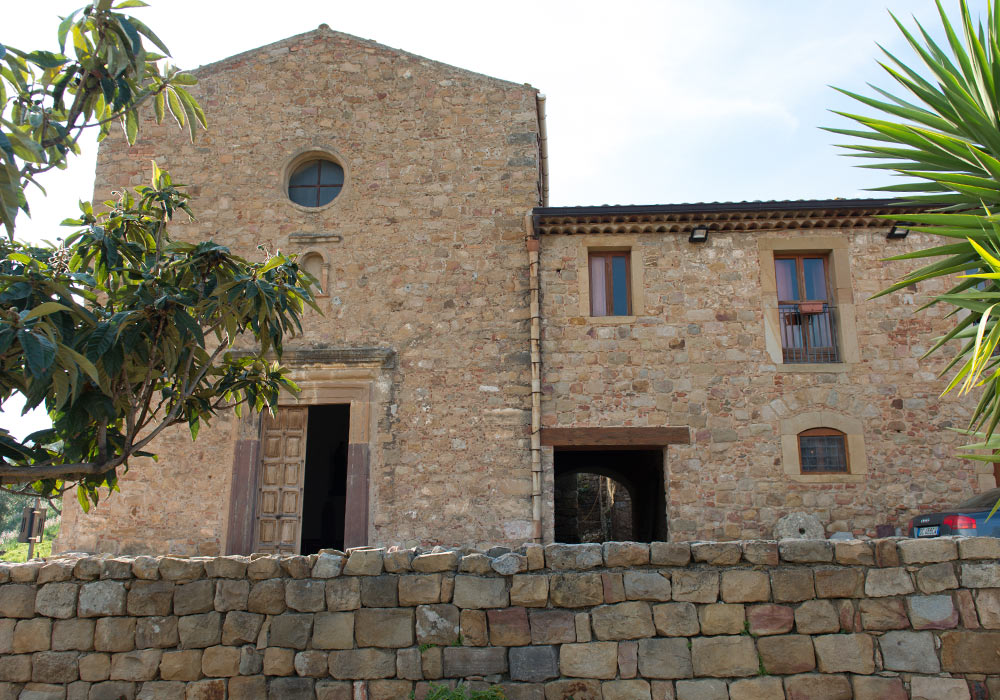
The medieval church.
Santa Maria delle Palate
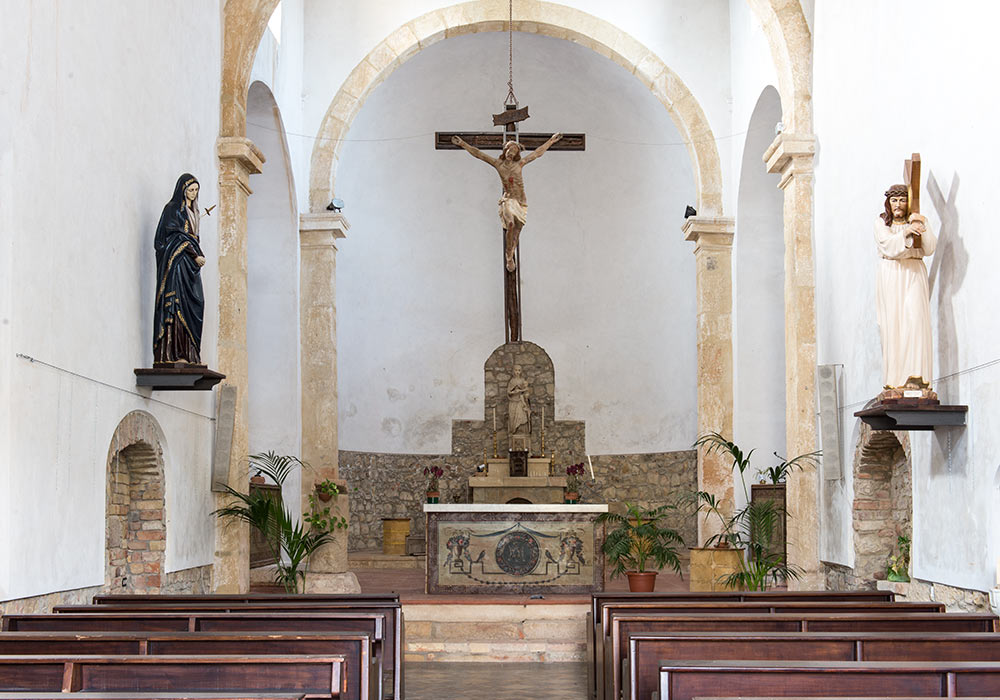
Next to the custodian's house at Halaesa lies a late medieval church, Santa Maria delle Palate, with some original painted statues in wood and a Madonna and Christ holding a globe in their hands made by the Gagini school. During the Norman period the church housed a Benedictine monastery and cloister that belonged to the resident abbot of the Church of Saint Bartholomew in Lipari. The church was first mentioned in legal documents in 1123, and was restored by Pasqualino Scaluni in 1551.
Photo: Per-Erik Skramstad / Wonders of Sicily
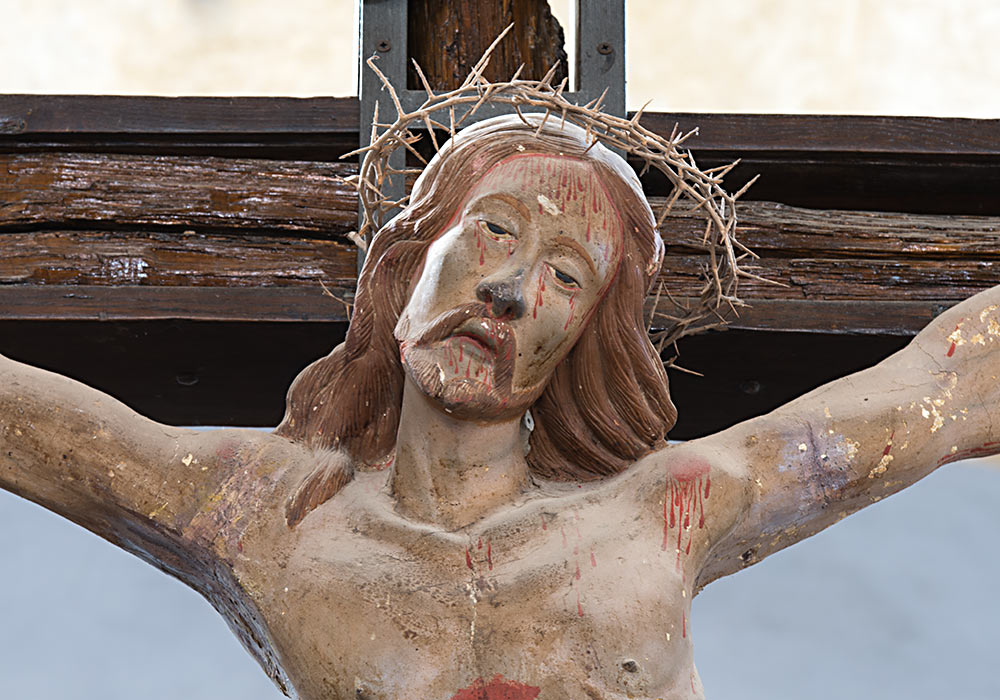
Detail of the crucified Christ in the medieval church Santa Maria delle Palate at Halaesa Arconidea.
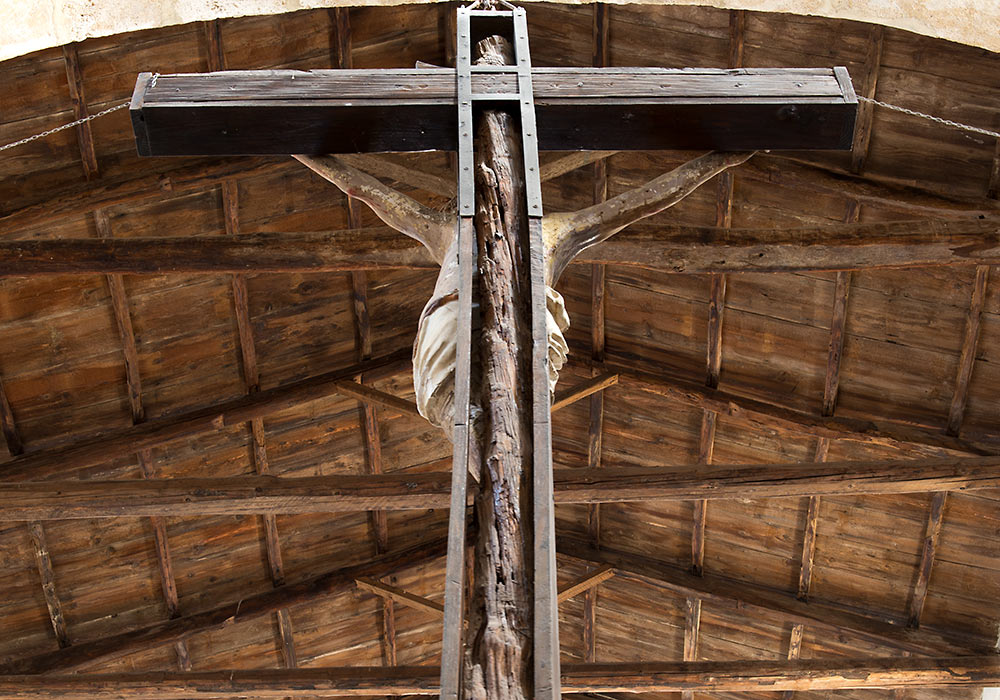
The backside of the medieval crucifix in the church Santa Maria delle Palate shows the original wood of the cross, now supported by a wooden framework.
Source: Information brochure available at the reception, the guide and Blue Guide Sicily.
Alesa Arconidea - Aleister Crowley in Cefalù - Bagheria - Balconies in Sicily - Baron Wilhelm von Gloeden - Baroque architecture in Sicily - Birds in Sicily - Caccamo - cars in Sicily - Castelmola - Cats in Italy - Collesano - Death in Sicily - Death in Sardinia - Entella - Film locations in Sicily - Fish, fishermen and fish markets in Sicily - Gela - Gibilmanna - Greeks in Sicily - Halaesa Arconidea - insects in Sicily - Linguaglossa - Lizards in Sicily - Maps of Sicily - Monreale Cathedral - Monreale Cloister - Life in Sicily - Mosaics in Sicily - Mount Etna - Museums and Exhibitions - Normans in Sicily - Palermo: Museum of the Holy Inquisition - Palermo: the Norman Palace - Palermo: Oratorio del SS. Rosario, San Domenico - Palermo: the Palatine Chapel (Cappella Palatina) - Palermo: Richard Wagner in Sicily - Palermo: La Zisa - Palermo: Chiesa Santa Maria della Catena (Church of Saint Mary of the Chain) - Syracuse: The Archeological Park - Tommaso Fazello - Tuna fishing in Sicily (La Mattanza) - Videos - Villa Palagonia (Bagheria) "The Villa of Monsters" (Villa dei Mostri) - Villa Romana del Casale (near Piazza Armerina) - Sicily in Art - Sicilian Art and Artists - The White Lotus season 2 locations in Sicily -

